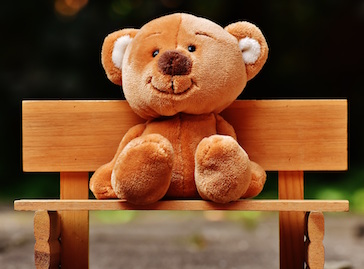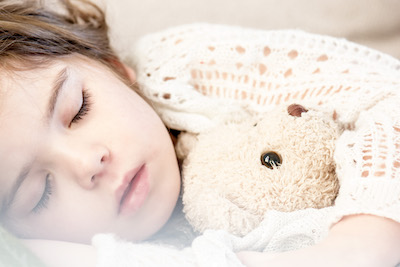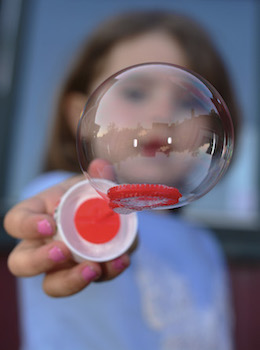Kids Klutter — A Parent’s Never Ending Story

It’s a bittersweet experience, seeing our babies grow from newborns to toddlers, then to little children, and on to young adults. Each phase doesn’t last nearly long enough and then it’s on to the next. Think of it as your child’s Never Ending Story of stretching and growing their way through life.
To be sure, it is a mental, physical, and very emotional journey that can leave us weeping at the thought of letting go of newborn clothes or books that we read to them at bedtime. Ahead, we’ll take a look at the psychology of why letting go of our children’s outgrown items is so hard, and offer up some emotional support and how-to’s to help you better cope with what may be out of control “Kid’s Klutter.”
>>> Ready to donate your clutter? To schedule your free donation pickup CLICK HERE
Much has been documented about the very real challenge in letting go of our children’s clothes, toys, books, blankets, and basically anything else they laid their tiny hands on. These items become imprinted with the memories we have associated with the developmental stages our children pass through. We see a onesie and are immediately transported back to the day of that child’s birth. The joy of that day brightens our smiles and warms our hearts, so it’s no wonder a sense of maternal or paternal emotional responsibility to keep everything creeps into our minds.
Do these thoughts sound familiar:
- “I have to keep these tattered jammies or I might lose the memory of her first Christmas morning,”
- “If I get rid of this stuffed lamb it may upset my child”
- “This pillow was given to us by Aunt Jane, she’ll be upset if I let it go.”
The anxiety caused by “Kids Klutter” is real. Researchers at the Yale School of Medicine asked study participants to sort through various items that were old and not of much use. Participants had to decide what to keep and what to toss. The researchers tracked brain activity and found something amazing: participants that were more likely to hold on to items in their real lives and reported they often felt “not right” about letting go of something showed increased stimulus in the regions of the brain that are associated with conflict and pain.
Perhaps the simplest way to think about this reaction to letting go is that it creates the signal of “something wrong.” This makes so much sense when we look at letting go of items that have attached memories — now when someone asks why you still have boxes of baby clothes you will never use again, you can honestly tell them, “My brain made me do it!”
Perhaps the simplest way to think about this reaction to letting go is that it creates the signal of “something wrong.” This makes so much sense when we look at letting go of items that have attached memories — now when someone asks why you still have boxes of baby clothes you will never use again, you can honestly tell them, “My brain made me do it!”
Here are some tips and strategies on how to recognize this impulse, find ways to curb it and move on to clearing out the “Kid’s Klutter:”
- First, know that most everyone feels these pangs and goes through the same sense of unease, especially when it comes to clearing out items associated with the phases of our children’s lives. Find comfort in knowing that this is a phase of your own, and just as your little one left her baby dolls behind to join the T-Ball team, you too can leave her once-beloved items behind.
- Just breathe. You haven’t let go of many items in the past because doing so may have caused an uncomfortable physical and emotional reaction. Instead of closing the top of the storage box and pushing it away, this time breathe and embrace your reactions. If you feel anxiety, simply breathe your way through it. Your favorite soothing music or candle scent may help as well.
Now you have the strength to tackle the contents of your storage spaces, closets, and boxes. Know that each item that you are about to touch has meaning and show yourself patience and kindness. While you acknowledge the wonders of the past, do not forget the joy of the present and the anticipation of future growth. Doing all three while decluttering will help motivate you to see that all items pass through amazing phases and that it is time to make room for present day and future items.
- Next, it’s time to decide what to keep and what to let go. Realize what you have kept and what you will get in the future is all a part of your family’s own Never Ending Story book. As with all books, each chapter only contains the words necessary for that chapter. Decluttering doesn’t mean you need to get rid of everything from every phase. Deciding what to keep and what to let go of is an important family journey, so ask your children to help in the process. Make this journey together with happiness, by teaching them that life is full of wonderful phases and letting go is a part of the process. They are often much more willing to let go of past phases than we are!
- Once you have decided what is currently size and age appropriate for your children, take all the items that no longer fit or are used and put them in baskets or boxes for sorting. Engage your kids in the process of organizing their newly renovated drawers, closets, and play areas. Once neat and clean, add to these areas a box for items that will be outgrown in no time. You and your kids can come up with cute labels for the boxes, such as “Let it Go” or “See You Later Alligator,” that will remind you to not use living spaces for items that are no longer needed, then plan to donate them.
- So now that you have all of the items that no longer fit or aren’t being used, it’s time to decide what still serves a purpose or holds value for you. You can’t keep it all, but you can chose an item or two that memorializes each phase of your child’s life. Maybe it’s the blanket she came home from the hospital in or the completely tattered book that got you both through those long nights. Pick one or two items from each phase and place in your Never Ending Story box. As you do, share the sweet stories with your children about the items you are keeping.
PRO TIP:
A great idea is to take a picture with your child, holding the items you are letting go of. They will love to see the photo of how much they have grown up and you can hold onto the memory! Place all of the other items into your “Donate” box. That’s right, donating is the best way to keep your children’s items living on, long past the time they out grow them.
- You have given your children the precious gift of learning about the importance of life’s phases, and now it’s time to teach them about giving through donation. Even though they no longer have a purpose or value for you, each of these precious, well-taken-care-of items will be of great value to another child. Have your children place each item in the “Donation” box, explain to them that their items will be loved and enjoyed by others. Teaching children about the beauty of generosity will stay with them throughout their lives.
Now it’s time to schedule your free donation pickup! We collect donations on behalf of the Vietnam Veterans of America (VVA), which is a wonderful organization that helps veterans and their families. Your kids can help you label each bag with the letters “VVA” on the box. Let them see the day you have scheduled for the pickup on your calendar, and make it a fun day to celebrate. But what about those boxes that are in your newly cleaned out closets and play rooms – the ones with the cute labels? Once they are filled, simply empty them into another “Donate” box or bag, schedule your appointment, and celebrate the wonder of your own Never Ending Story.
America’s Best Donation Pickup Program




